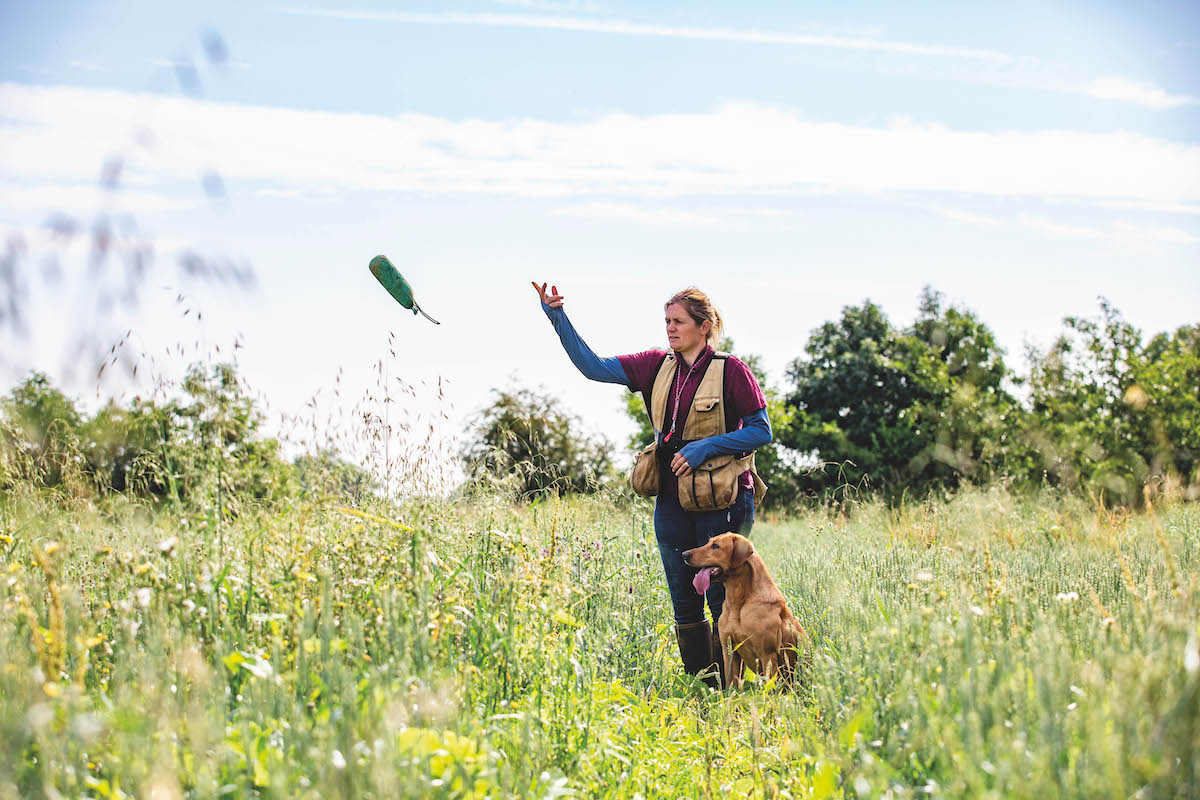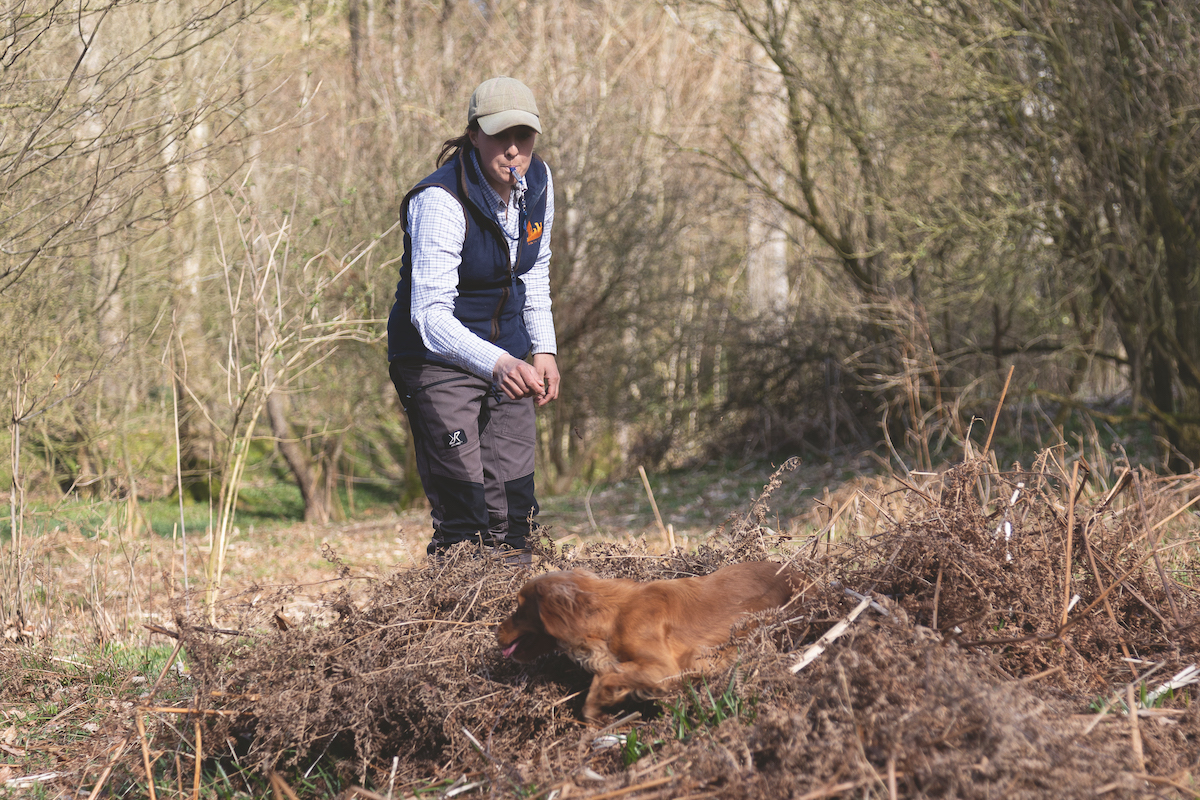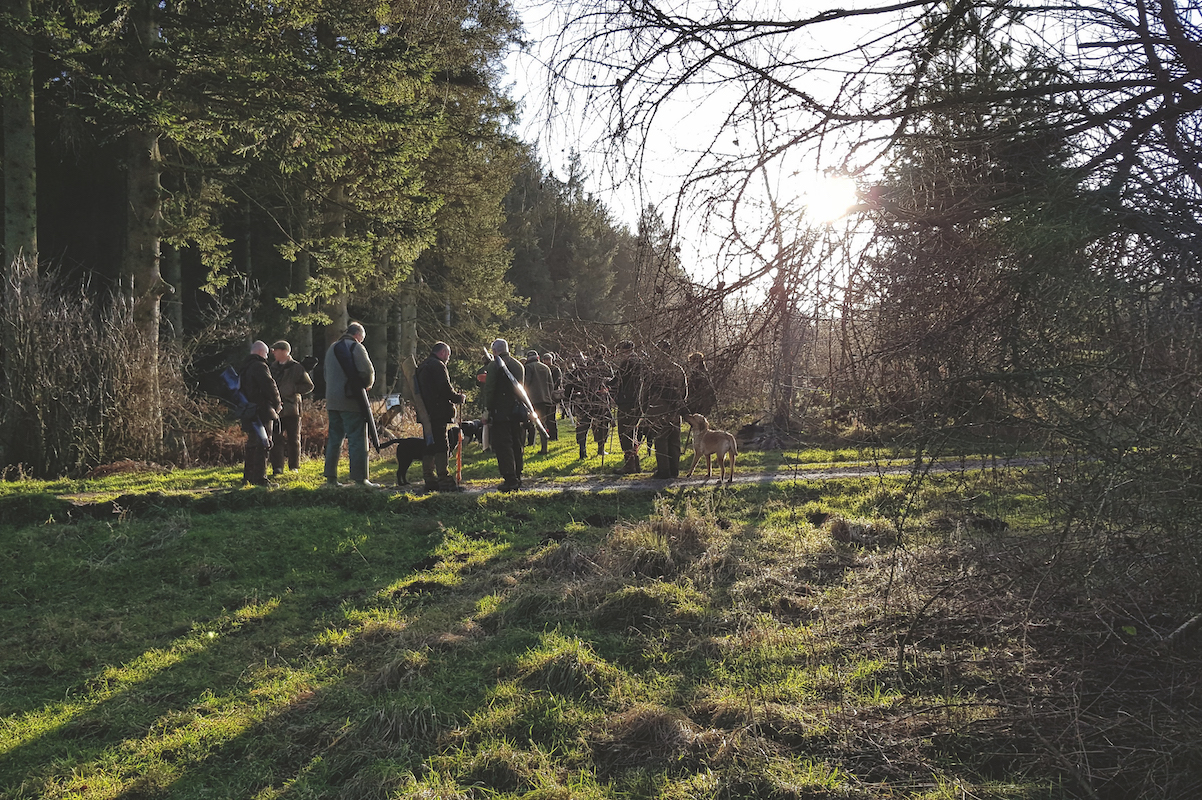Tramline training for working dogs: get on the right track
Tramline training is an effective and low-impact way of preparing your dogs ahead of the upcoming season, explains Ellena Swift

Ellena wants River to be running straight lines
My dogs are slowly starting to get fit now, and I am beginning to increase the work they are doing. It is important to treat each dog individually and ensure their exercise suits their age, physical health and end goal. Low-impact exercise such as swimming and slow running on soft ground are much better than road running.
I have dogs at various stages of fitness and of different ages. One bitch has recently had puppies and has only just been weaned, so her work is gentle and will slowly increase with the goal of having her back at work in October. The others are all nine and under and in good health. Hill walks are being taken regularly, and the younger dogs are doing at least two training sessions each week. They also do weekly swimming sessions and some gentle runs alongside the quad bike.
While taking the dogs around the fields, I tend to use the tramlines for memory retrieves and general running. These are good for getting dogs moving in straight lines and building confidence. However, for those more advanced dogs, you can use these simple tracks to really challenge them.

Ellena sends River up a tramline for a memory retrieve, which he picks confidently
Memory retrieves
Depending on your dog, they may relish the chance to run up a track rather than fight through cover. Others will be the opposite and much prefer to leave the track and hunt the cover. This means they often run only a few yards up the tramline before diving off to hunt. Depending which way your dog is inclined, start with memory retrieves. Know the level of your dog and do not push them until they fail. It is easy to confuse them, and if they constantly fail you can flatten them or teach them to ignore you.

River jumps into the cover with ease, rather than sticking to the tramline
I start by leaving a memory on the tramline individually. If your dog is a novice, walk them back down the tramline you expect them to run up. If they are more advanced, you can walk them in a half circle back to the sending point, so they are not walking the way you expect them to run.
Make sure the dummy is laid side-on and is clearly visible on the tramline. For this exercise, the retrieve must be found easily. Line them up and cast them up the tramline. If the dog changes tramline or dives into the cover, simply bring them back and start again. If they fail, I will make the retrieve shorter to ensure success. You can then start to increase the distance. Then put a memory retrieve on the neighbouring tramline and again repeat the first exercise.
Once they reach the area, I am not concerned if they hunt the area and swap tramlines. However, the cast/outrun should be up the track you want. Once they are running that well, you can begin to increase the technicality.
I stand with River and turn him, so he is at an angle (approximately ‘two o’clock’ from the retrieve). I throw a mark out into the cover and send him immediately. I do not want him to run up the tramline until he is parallel with the retrieve and then dive in the cover. I want him to take the direct route from where I stand, which means he should immediately enter the cover. Again, if he makes a mistake, I will break it down and make the retrieve at an easier angle.

Ellena puts a blind retrieve in the middle of some cover for Briar, encouraging her to work through the cover rather than taking the easy option and going round the edge
Building difficulty
Once he is picking that nicely, I then build this exercise up so it is a double retrieve. I put the mark out to the right on a relatively tight angle. It is important to make sure the dog is facing the way of the mark when you throw it. This is so it is easy for the dog to differentiate the difference between retrieves.
This time, instead of sending the dog for the mark, I turn him so he is facing the memory up the tramline. To ensure the dog fully understands he is going up the tramline and not for the mark, I take a few steps forwards with my casting hand out. This helps ensure he understands “this is the direction you are going”. I cast him up the tramline to pick that one. Once picked, I angle him to pick the delayed mark in the crop.
Briar can cope with more difficult drills. However, I still want to make sure she is succeeding, and so doing basic drills is never a bad idea, even for advanced dogs every now and then.

For more experienced dogs, Ellena increases the difficulty while still making sure they succeed
Next, for Briar, I make the drill a bit harder. Between the tramline and the edge of the field there is a strip of approximately 12m of cover, so I put a blind retrieve about 60 yards in the middle of the strip of cover. The temptation here is for the dog to run to either the edge of the field or on to the tramline. Briar is a dog who loves cover but is also a real people-pleaser. In her head, she thinks she needs to get to the retrieve as quickly as possible and believes she can get there faster running up the tramline. The first two attempts she dives off left to run the tramline. Each time I bring her back and start again. I move her a touch closer after the second attempt as I do not want to flatten her.
When she achieves and picks, I set up the drill again and she picks the second one beautifully. I am trying to teach her to take on difficult conditions rather than attempt to run around them.
I then put a blind retrieve up the tramline parallel with the previous retrieve. Obviously, I am now casting her up the tramline that, just moments before, I was asking her not to run up. If you need to make any of these easier, you can make them a memory rather than a blind. Like with the young dog, I make sure the dummy is laying side on and in the middle of the tramline so it is visible.
She powers out beautifully but at the last five yards or so, dives off left into the cover where she has picked from before. So I bring her back and send her again. The second time she holds her line and succeeds. I am pleased with both dogs so decide to come back for another session and increase the difficulty.

Ellena starts the exercise with short retrieves, building the distance as the dogs gain confidence
If you follow the tramline a little further, it bends around to the left. I want my dogs to hold a straight line no matter what the land or ground does. For River, I stand on the bend of the tramline and throw a marked retrieve in a straight line (so not following the bend around to the right). I then put another retrieve in the same place as a memory and walk the tramline back. As I am walking, I drop a blind on the tramline about 30 yards short of the memory, which is in the crop. This means when I turn to send him, he will pick the blind first, which is on the tramline. When I send him the second time, I want him to power past the old fall and hold his line when he reaches the bend and not follow the track around to the right.

There’s always time to practise some steadiness training no matter what exercises you are doing
Hold the line
For Briar, I make it slightly harder. I put a memory retrieve on the tramline just where the track goes around to the right. I then send her up the tramline for her to pick the memory. I have now put a blind exactly where River’s mark was in the cover. When I send her the second time, I want her to ignore the old fall and hold her line into the cover.
The first time she does ignore the old fall but follows the track to the right. I send her again and she powers on a true line straight into the crop. If she hadn’t, I would have taken her to the bend (where she went wrong) and cast her from there, then moved further back to repeat the retrieve once she understood.
These exercises are all about building confidence and the ability to run a straight line no matter the cover or temptations around. If it goes wrong, always break it down and make it easier and more achievable for the dog.








